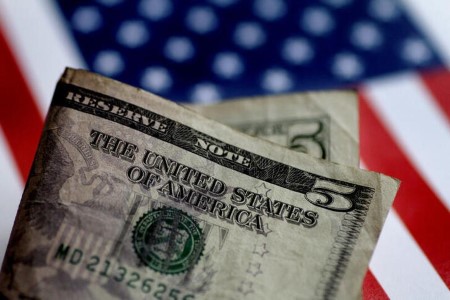




Philippines Trade Update: Trade trajectories trend along
 DOWNLOAD
DOWNLOAD

Policy Rate Updates: Double cut finale
 DOWNLOAD
DOWNLOAD

Monthly Economic Update: One for the road
 DOWNLOAD
DOWNLOAD


US yields march higher as tight labor data fuels inflation scare

NEW YORK, March 2 (Reuters) – US Treasury yields continued to climb on Thursday after strong labor data reinforced concerns that the US Federal Reserve will need to raise interest rates more to cool the economy.
Data from Europe had already pushed US government bond yields higher as stickier-than expected euro zone inflation numbers supported expectations that interest rates would go higher and stay there for longer.
Strong jobless claims data in the US, where the number of Americans filing new claims for unemployment benefits fell again last week, reinforced that narrative on Thursday, as well as data showing that US labor costs grew faster than initially thought in the fourth quarter.
Yields, which move inversely to bond prices, had already touched new highs on Wednesday and they climbed further on Thursday.
“The march higher has been relentless, and each incremental data point is just helping the momentum continue,” said Matthew Miskin, co-chief investment strategist at John Hancock Investment Management.
“In addition to the very tight labor data … we also have unit labor costs coming in hotter than expected, so if wage inflation is also ticking back up, combined with broader inflation ticking back up, that is in essence spooking the bond market that inflation is getting more entrenched,” he said.
Benchmark 10-year yields were trading above 4% on Thursday and were last seen at 4.057%, their highest since November. Two-year yields, which are more closely linked to monetary policy expectations, were last seen at 4.928% – an over 15-year high.
On the long end, 30-year bond yields also broke above 4% for the first time since mid-November last year and were last seen at 4.009%.
Expectations that the US central bank may need to raise rates by 50 basis points at its next meeting this month increased marginally on Thursday, according to CME Group data, though the consensus remained for a 25-bp hike.
The probability that the Fed’s policy rate, currently set in the 4.5% to 4.75% range, could go up to a 5%-5.25% range this month stood at about 34%, up from about 30% on Wednesday.
“The economy is still looking robust and that should keep the Fed’s hawkish speak going. Rates will undoubtedly be higher for longer, but the risks of larger than quarter-point rises may be back on the table,” Edward Moya, senior market analyst at OANDA, said in a note.
(Reporting by Davide Barbuscia; Editing by Andrea Ricci)
This article originally appeared on reuters.com





 By Reuters
By Reuters